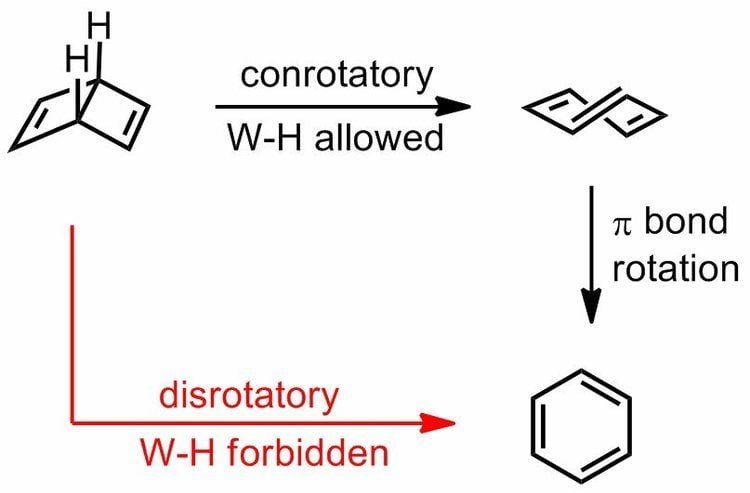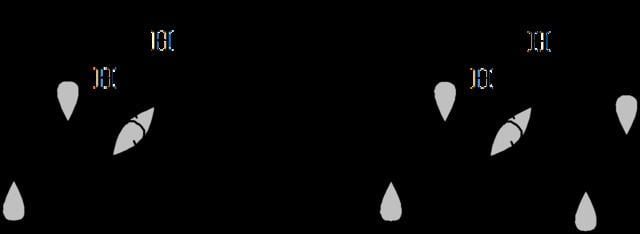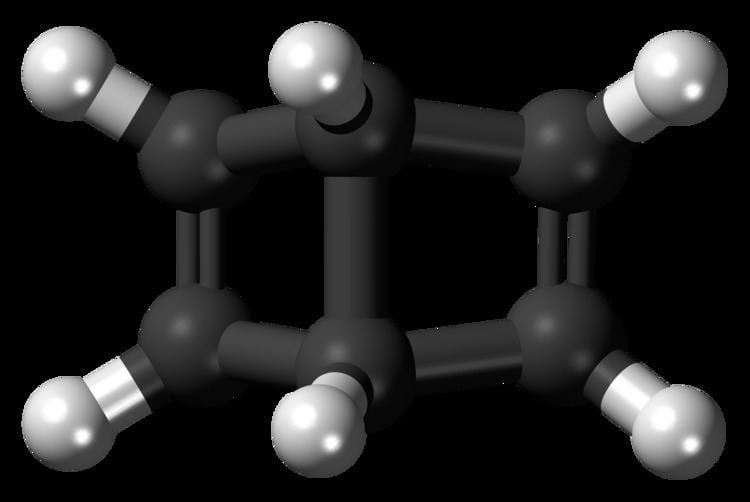Formula C6H6 | Molar mass 78.1 g/mol | |
 | ||
Similar Prismane, Twistane, Cubane | ||
Dewar benzene or bicyclo[2.2.0]hexa-2,5-diene is a bicyclic isomer of benzene with the molecular formula C6H6. The compound is named after James Dewar who included this structure in a list of possible C6H6 structures in 1867. However, he did not propose it as the structure of benzene, and in fact he supported the correct structure previously proposed by August Kekulé in 1865.
Contents
Structure and properties

Unlike benzene, Dewar benzene is not flat because the carbons where the rings join are bonded to four atoms rather than three. These carbons tend toward tetrahedral geometry, and the two cyclobutene rings make an angle where they are cis-fused to each each other. The compound has nevertheless considerable strain energy and reverts to benzene with a chemical half-life of two days. This thermal conversion is relatively slow because it is symmetry forbidden based on orbital symmetry arguments.
Synthesis

The compound itself was first synthesized in 1962 as a tert-butyl derivative and then as the unsubstituted compound by E.E. van Tamelen in 1963 by photolysis of cis-1,2-dihydro derivative of phthalic anhydride followed by oxidation with lead tetraacetate.
"Dewar benzene" and benzene

It is sometimes incorrectly claimed that Dewar proposed his structure as the true structure of benzene. In fact, Dewar merely wrote the structure as one of seven possible isomers and believed that his experiments on benzene supported the (correct) structure that had been proposed by Kekulé.

After the development in 1928 of the valence bond theory, the three possible Dewar structures were considered as minor resonance contributors in the overall description of benzene. The major resonance contributors are of course the two possible Kekulé structures.
Other classic structures that have been considered as possible benzene isomers are prismane, benzvalene and Claus' benzene. Prismane and benzvalene were synthesized in the 1970s; Claus' benzene is impossible to synthesize.
Hexamethyl Dewar benzene
Hexamethyl Dewar benzene has been prepared by bicyclotrimerization of dimethylacetylene with aluminium chloride. It undergoes an unusual rearrangement reaction with hydrohalic acids to form a pentamethylcyclopentadiene derivative, and consequently can be used as a starting material for synthesising some pentamethylcyclopentadienyl organometallic compounds.
One of the alkenes can be epoxidized using mCPBA, peroxybenzoic acid, or dimethyldioxirane (DMDO). Using a peracid (mCPBA or peroxybenzoic acid), the epoxy product quickly rearranges, catalyzed by the acid byproduct of the epoxidation.
Using DMDO gives the epoxide as a stable product—the byproduct of the epoxidation is neutral acetone. By varying the amount of DMDO, either the mono- or diepoxide can be formed, with the oxygen atoms exo on the bicyclic carbon framework.
In 1973, the dication (doubly charged cation) of hexamethyl benzene was produced. This can be done by dissolving the epoxide in magic acid, which removes the oxygen as an anioon. NMR hinted that the structure was a pentagonal pyramid, with the apex carbon bonding to six other carbon atoms. X-ray crystallographic analysis of the salt with StF−
6 published in 2016 showed that this was indeed the case.
